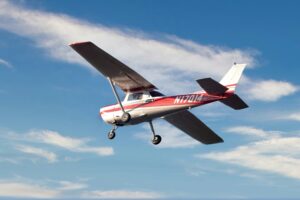Aerodynamic Adventures: Blending History with Modern RC Plane Thrills


The Sky Has Always Called to Us
There’s something timeless about the sight of a plane soaring through the sky. From the Wright brothers’ first flight over the dunes of Kitty Hawk to today’s sophisticated radio-controlled (RC) aircraft, humans have always been fascinated by flight. What began as an experiment in balance and control has evolved into a worldwide hobby that brings together history buffs, engineers, and everyday dreamers alike. Modern RC planes aren’t just toys—they’re miniature marvels that echo the innovations of aviation pioneers while pushing the boundaries of what’s possible in aerodynamics.
From Biplanes to Brushless Motors
Early RC planes were often modeled after classic aircraft—the kind that defined early aviation history. Think of World War I biplanes with their stacked wings, or the sleek World War II fighters that ruled the skies. These early replicas were powered by glow engines that required tuning, patience, and a steady hand. Fast-forward to today, and electric motors have changed everything. Brushless motors and lightweight lithium polymer (LiPo) batteries have made RC planes more efficient, cleaner, and easier to handle. The thrill remains the same, but the experience has become smoother and far more accessible.
A Fusion of Engineering and Art
Modern RC planes are a blend of creativity and technology. Many hobbyists spend hours customizing paint schemes or tweaking wing shapes to enhance performance. You’ll find builders experimenting with materials—carbon fiber for strength, foam for lightness, and even 3D-printed components for precision. What’s fascinating is that these same aerodynamic principles—lift, drag, thrust, and weight—remain constant from full-sized aircraft to RC models. Every adjustment, from the curve of the wing to the angle of the tail, impacts how a plane dances in the air. It’s part science, part artistry, and entirely addictive.
The Joy of the First Successful Flight
Ask any RC pilot about their first flight, and you’ll see their face light up. That mix of nerves and exhilaration never fades. The first time your plane lifts off the ground, steadies itself, and circles overhead, you’re hooked. Of course, not every takeoff ends in triumph—crashes are part of the journey. But with every repair, you learn a little more about balance, thrust, and control. That hands-on learning is what makes RC aviation so rewarding. It’s trial, error, and success, all played out under an open sky.
Technology Takes the Controls
Modern RC planes come packed with technology that early enthusiasts could only dream of. Gyroscopic stabilization, GPS navigation, and flight controllers with return-to-home features have transformed how pilots fly. Even beginners can now enjoy smooth, stable flights thanks to smart sensors that automatically correct drift or turbulence. Drones may have stolen some of the spotlight, but fixed-wing RC planes still offer something special—a connection to real aerodynamics and the satisfaction of manual control. Some models even allow for mixed modes, where pilots can switch between assisted and manual flight midair.
Community, Camaraderie, and Competition
One of the most exciting parts of the RC plane world is the community. Across parks, open fields, and dedicated flying clubs, pilots of all ages gather to share their passion. You’ll find retirees flying vintage warbirds, teenagers testing high-speed racers, and families building kits together on weekends. Online forums and social media groups have also brought this community closer than ever. RC competitions—ranging from aerobatic stunts to endurance races—add an extra layer of excitement. Winning isn’t just about having the fastest plane; it’s about mastering the skies through skill and precision.
Where History Still Takes Flight
For many enthusiasts, RC planes are more than a hobby—they’re a tribute to aviation history. Recreating classic aircraft like the Spitfire, Mustang, or DC-3 keeps history alive in a tangible way. Museums and airshows sometimes include RC demonstrations to showcase how these miniature aircraft mirror their full-scale counterparts. It’s an inspiring way to experience history firsthand, seeing how aerodynamic concepts from decades ago still shape flight today. And for younger generations, it’s an engaging bridge between past and present—a history lesson wrapped in wings and propellers.
Ready for Your Own Aerodynamic Adventure?
If you’ve ever dreamed of flying but never had the chance to take the controls of a real airplane, RC aviation offers the next best thing. You don’t need a degree in aeronautical engineering or a huge budget to start. Beginners can find ready-to-fly models that are durable, affordable, and forgiving in the air. With practice, you can progress to more advanced planes, experiment with aerobatics, or even design your own. The only real limit is your imagination—and perhaps a little bit of runway space.
The beauty of modern RC flight is how it connects us to both innovation and nostalgia. It reminds us that flight, in any form, is about freedom, curiosity, and joy. Whether you’re a history lover, a tinkerer, or just someone who loves watching wings cut through the sky, there’s an aerodynamic adventure waiting for you. All you have to do is look up—and let your imagination take off.
